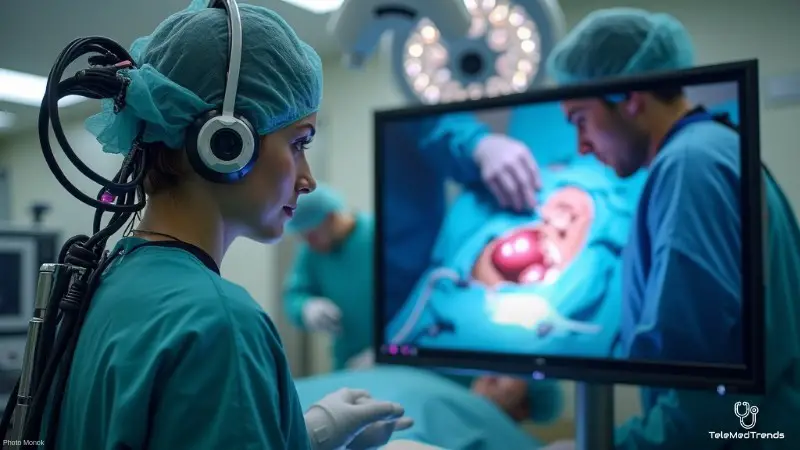Remote surgery, or telesurgery, is revolutionizing healthcare by bridging geographical gaps and delivering advanced medical care worldwide. Through the integration of robotics, telemedicine, and cutting-edge network technology like 5G, surgeons can now perform complex procedures from miles away.
This breakthrough offers a glimpse into a future where quality healthcare is accessible to all, regardless of location. Beyond its technical marvel, telesurgery highlights the potential of technology to redefine the way care is delivered.
Key Takeaways
Remote surgery is revolutionizing healthcare by bridging geographical gaps and delivering advanced medical care worldwide.
- 5G technology enables seamless communication between robotic systems and surgeons during telesurgery, allowing for real-time precision.
- Telemedicine platforms paired with robotic surgical systems amplify surgical precision, safety, and accessibility while minimizing travel costs and risks associated with long-distance healthcare delivery.
- The future of virtual care in healthcare is promising, with potential applications in disaster zones, rural areas, and even space missions.
The role of 5G & telemedicine in telesurgery
The role of 5G and telemedicine is pivotal in enabling telesurgery. With its low latency and high-speed connectivity, 5G ensures seamless communication between robotic systems and surgeons, allowing real-time precision during procedures. A notable example is Dr. Ling Zhipei’s groundbreaking surgery performed over a 5,000-mile distance using a 5G network. This achievement showcased the transformative power of technology in overcoming logistical and geographical barriers.
Telemedicine platforms, paired with systems like the Da Vinci Surgical System, amplify surgical precision, safety, and accessibility. They also minimize travel costs, enable collaboration among global specialists, and reduce risks associated with long-distance healthcare delivery.
Innovations in virtual care and robotic curgery
Telesurgery has its roots in early milestones such as the 1985 PUMA 560 robot and NASA’s Telemedicine Spacebridge. These innovations laid the groundwork for modern systems integrating high-resolution imaging, haptic feedback, and robotic controls. Today, robotic surgical systems allow for minimally invasive surgeries with smaller incisions and faster recovery times.
The future of virtual care in healthcare
The future of virtual care is promising, with potential applications in disaster zones, rural areas, and even space missions. Beyond surgery, innovations in virtual care have expanded to include remote consultations, diagnostics, and surgical training. Addressing barriers like cybersecurity, implementation costs, and healthcare inequities will be crucial to maximizing the potential of telesurgery.
As 5G and telemedicine continue to evolve, remote surgery stands poised to transform global healthcare, offering advanced care to all while reshaping the boundaries of medical possibilities.






